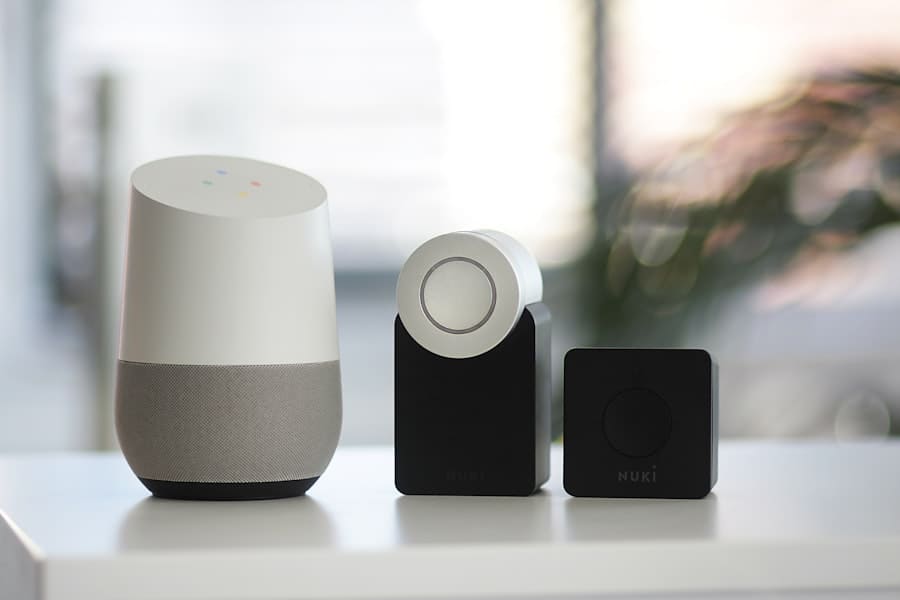The Internet of Things (IoT) has emerged as a transformative force across various sectors, fundamentally altering how we interact with technology and manage resources. At its core, IoT refers to the interconnection of everyday devices to the internet, enabling them to send and receive data. This connectivity allows for real-time monitoring, control, and automation, which can significantly enhance energy efficiency in residential settings.
As global energy consumption continues to rise, the need for innovative solutions to optimize energy use has never been more pressing. The integration of IoT technologies into home energy systems presents a promising avenue for reducing waste and promoting sustainability. Energy efficiency is not merely a buzzword; it is a critical component of environmental stewardship and economic viability.
By leveraging IoT technologies, homeowners can gain unprecedented insights into their energy consumption patterns, identify inefficiencies, and implement strategies to reduce their carbon footprint. The synergy between IoT and energy efficiency is particularly relevant in the context of climate change, where reducing greenhouse gas emissions is paramount. As we delve deeper into the various applications of IoT in enhancing energy efficiency, it becomes evident that these technologies are not just about convenience; they are essential tools for creating a more sustainable future.
Key Takeaways
- IoT technology plays a crucial role in improving energy efficiency in homes by enabling smart devices to communicate and optimize energy usage.
- Smart thermostats allow for precise climate control and energy savings by learning user preferences and adjusting temperature settings accordingly.
- Energy monitoring and management systems provide real-time insights into energy consumption, allowing homeowners to identify and address areas of inefficiency.
- Automated lighting and appliance control systems help reduce energy waste by turning off devices when not in use and optimizing lighting based on occupancy.
- Solar power integration and optimization solutions enable homeowners to generate their own renewable energy and reduce reliance on traditional power sources.
Smart Thermostats and Climate Control
Optimizing Energy Use through Automation
For instance, a smart thermostat can detect when a home is unoccupied and automatically lower the temperature or turn off the air conditioning, thereby conserving energy without sacrificing comfort. Advanced models can even utilize weather forecasts to preemptively adjust settings based on expected temperature changes, ensuring that homes remain comfortable while minimizing energy consumption.
Remote Monitoring and Control
Moreover, smart thermostats often come equipped with mobile applications that allow homeowners to monitor and control their heating and cooling systems remotely. This feature not only enhances convenience but also empowers users to make informed decisions about their energy use. For example, if a homeowner realizes they left the air conditioning running while away on vacation, they can easily turn it off via their smartphone.
Energy Efficiency and Continuous Improvement
Additionally, many smart thermostats provide detailed reports on energy usage, helping users identify trends and make adjustments to further enhance efficiency. The integration of machine learning algorithms enables these devices to continuously improve their performance over time, adapting to changing household dynamics and preferences.
Energy Monitoring and Management

Energy monitoring systems are pivotal in providing homeowners with real-time insights into their energy consumption patterns. These systems utilize IoT sensors to track energy usage across various appliances and systems within the home. By collecting data on how much energy each device consumes, homeowners can pinpoint inefficiencies and make informed decisions about their energy use.
For instance, if a particular appliance is found to be consuming an excessive amount of electricity, it may prompt the homeowner to consider replacing it with a more energy-efficient model or adjusting its usage habits. In addition to monitoring individual appliances, comprehensive energy management systems can aggregate data from multiple sources to provide a holistic view of a home’s energy consumption. This aggregated data can be analyzed to identify peak usage times, allowing homeowners to shift their energy-intensive activities to off-peak hours when electricity rates are lower.
Furthermore, many energy monitoring systems are compatible with smart home platforms, enabling seamless integration with other IoT devices for automated control. For example, if the system detects that energy consumption is exceeding a certain threshold, it can automatically adjust the settings of connected devices to reduce overall usage.
Automated Lighting and Appliance Control
Automated lighting systems are another significant application of IoT technology in enhancing energy efficiency within homes. These systems utilize motion sensors and smart controls to adjust lighting based on occupancy and natural light levels. For instance, lights can be programmed to turn off automatically when a room is unoccupied or dim when sufficient daylight is available.
This not only reduces unnecessary energy consumption but also extends the lifespan of light bulbs, contributing to overall sustainability. In addition to lighting, IoT-enabled appliances can also be programmed for optimal energy use. Smart plugs and outlets allow homeowners to control when devices are powered on or off remotely or according to a schedule.
For example, a homeowner might set their coffee maker to turn on just before they wake up in the morning while ensuring that it turns off automatically after a set period. This level of control not only enhances convenience but also minimizes standby power consumption—often referred to as “phantom load”—which can account for a significant portion of household energy use.
Solar Power Integration and Optimization
The integration of solar power into residential energy systems represents a significant advancement in sustainable living. IoT technologies play a crucial role in optimizing solar power generation and consumption within homes. Smart solar inverters can monitor the performance of solar panels in real-time, providing data on energy production and system efficiency.
This information allows homeowners to assess whether their solar investment is yielding optimal returns and make necessary adjustments if performance dips below expectations. Moreover, IoT-enabled systems can facilitate better management of solar energy by coordinating its use with household demand. For instance, during peak sunlight hours when solar production is at its highest, smart home systems can prioritize the use of solar-generated electricity for high-demand appliances such as washing machines or electric vehicles.
This not only maximizes the utilization of renewable energy but also reduces reliance on grid electricity during peak hours, leading to cost savings on utility bills. Additionally, advanced battery storage solutions integrated with IoT technology allow homeowners to store excess solar energy for use during non-sunny periods, further enhancing energy independence.
Smart Home Energy Management Systems

Comprehensive Energy Monitoring
By consolidating data from smart thermostats, lighting controls, appliances, and solar power systems, SHEMS enable users to make informed decisions about their energy use.
Actionable Insights for Energy Efficiency
One of the key features of SHEMS is their ability to analyze historical data and provide actionable insights for improving energy efficiency. For example, these systems can generate reports that highlight trends in energy consumption over time, allowing homeowners to identify patterns and adjust their habits accordingly.
Automated Energy Management
Additionally, SHEMS can facilitate automated responses based on user-defined preferences or real-time conditions. If the system detects that energy usage is exceeding a certain threshold during peak hours, it can automatically adjust settings across connected devices to reduce consumption without requiring manual intervention.
IoT-enabled Energy Conservation Strategies
The implementation of IoT technologies opens up numerous avenues for developing effective energy conservation strategies within homes. One such strategy involves demand response programs that leverage real-time data to adjust energy consumption based on grid conditions. Homeowners can participate in these programs by allowing their smart devices to respond automatically during peak demand periods—such as reducing air conditioning usage or delaying the operation of high-energy appliances—thereby contributing to grid stability while benefiting from potential financial incentives.
Another innovative approach involves gamification techniques that encourage homeowners to adopt more sustainable practices through competition and rewards. IoT-enabled platforms can track individual or household energy consumption and compare it against community benchmarks or goals. By fostering a sense of competition among neighbors or family members, these platforms motivate users to reduce their energy use actively.
For instance, households might receive notifications about their standing in comparison to others in their area or earn rewards for achieving specific conservation milestones.
Future Trends in IoT and Energy Efficiency in Homes
As technology continues to evolve, the future of IoT in enhancing energy efficiency within homes looks promising. One emerging trend is the increased integration of artificial intelligence (AI) with IoT devices for smarter decision-making capabilities. AI algorithms can analyze vast amounts of data collected from various sensors and devices to predict usage patterns and optimize performance proactively.
Additionally, advancements in edge computing are likely to enhance the capabilities of IoT devices by enabling them to process data locally rather than relying solely on cloud-based solutions. This shift could result in faster response times and improved reliability for real-time applications such as automated lighting or climate control systems.
Furthermore, as renewable energy sources become more prevalent, we may see an increase in decentralized energy management solutions that empower homeowners to generate, store, and manage their own energy resources more effectively.
As consumers become increasingly aware of their environmental impact and seek ways to reduce their carbon footprint, the role of IoT in facilitating sustainable living will undoubtedly expand, paving the way for smarter homes that prioritize both comfort and conservation.
If you are interested in how emerging technologies are shaping our world, you may also want to check out this article from Wired.com. It delves into the various ways in which new technologies are revolutionizing different aspects of our lives, including energy efficiency in modern homes through IoT integration. By exploring both articles, you can gain a comprehensive understanding of the impact of technology on our daily lives.
FAQs
What is IoT?
IoT stands for Internet of Things, which refers to the network of physical devices, vehicles, home appliances, and other items embedded with sensors, software, and connectivity that enables them to connect and exchange data.
How does IoT enhance energy efficiency in modern homes?
IoT enhances energy efficiency in modern homes by allowing for the automation and control of various devices and systems such as lighting, heating, cooling, and appliances. This enables homeowners to monitor and optimize their energy usage, leading to reduced energy consumption and lower utility bills.
What are some examples of IoT devices that enhance energy efficiency in modern homes?
Examples of IoT devices that enhance energy efficiency in modern homes include smart thermostats, smart lighting systems, smart appliances, and energy monitoring systems. These devices can be controlled and optimized remotely through smartphone apps or programmed to adjust settings based on occupancy and usage patterns.
How does IoT contribute to sustainable living in modern homes?
IoT contributes to sustainable living in modern homes by promoting energy conservation and reducing environmental impact. By optimizing energy usage and reducing waste, IoT-enabled homes can contribute to a more sustainable and eco-friendly lifestyle.
What are the potential cost savings associated with implementing IoT for energy efficiency in modern homes?
The potential cost savings associated with implementing IoT for energy efficiency in modern homes can vary depending on factors such as the size of the home, the number of IoT devices installed, and the local cost of energy. However, studies have shown that IoT-enabled energy management systems can lead to significant cost savings on utility bills over time.

